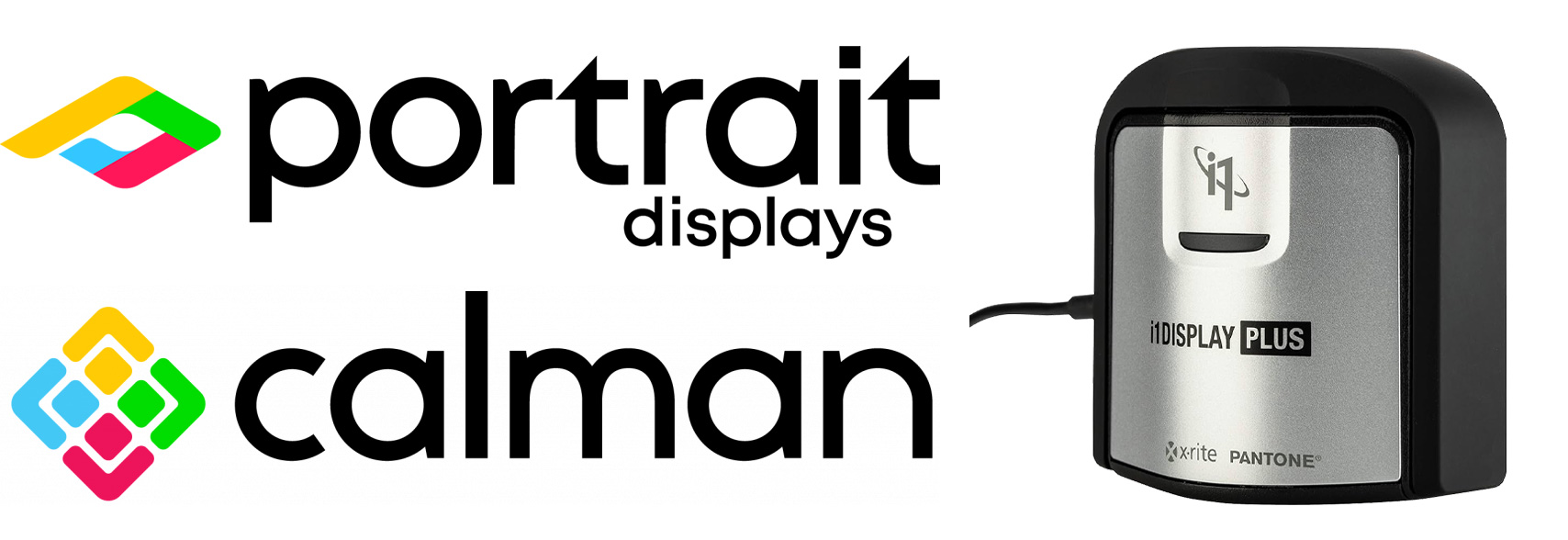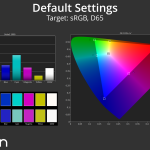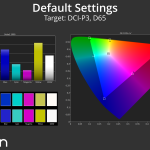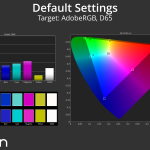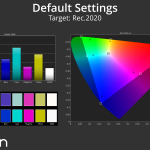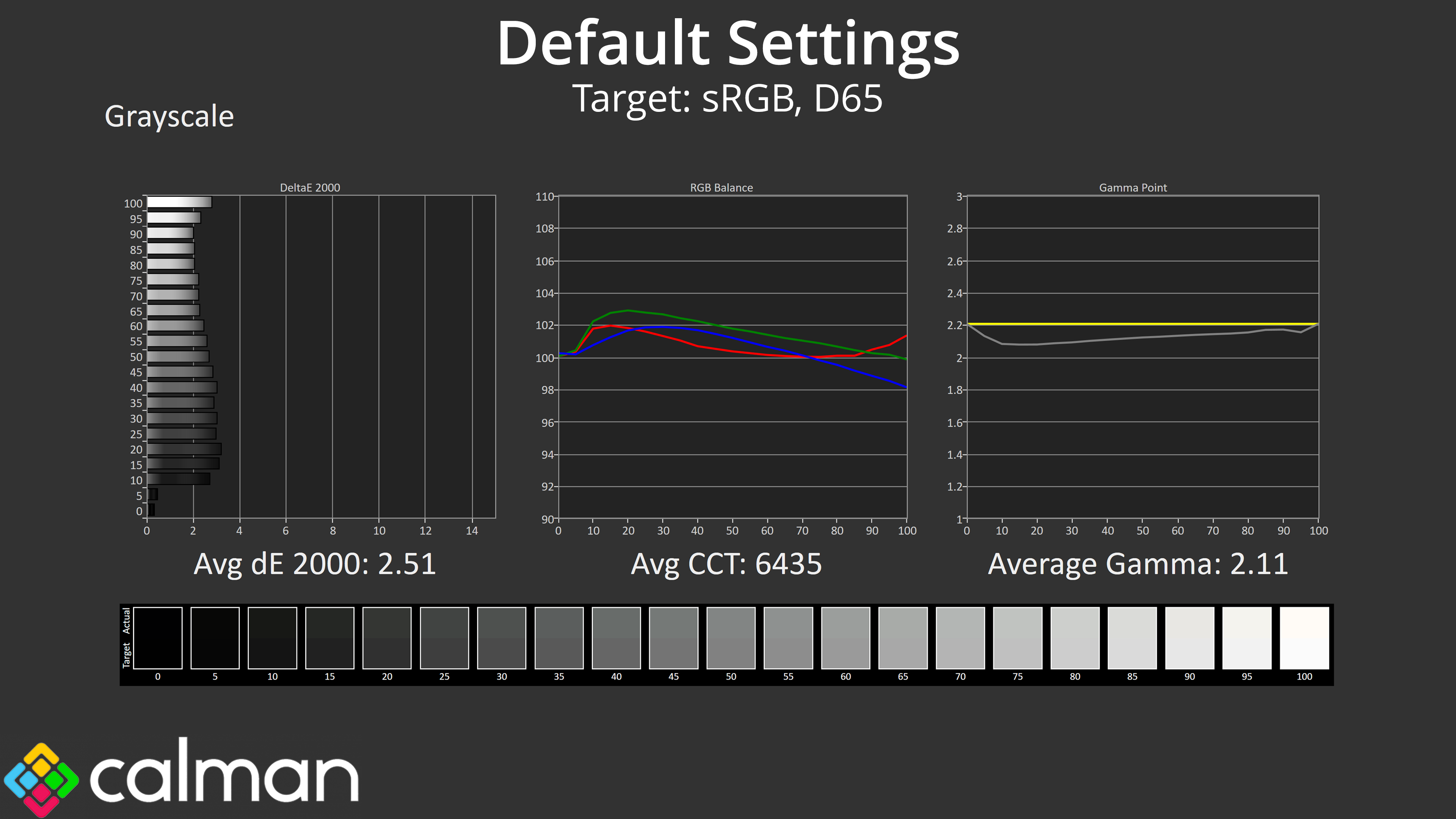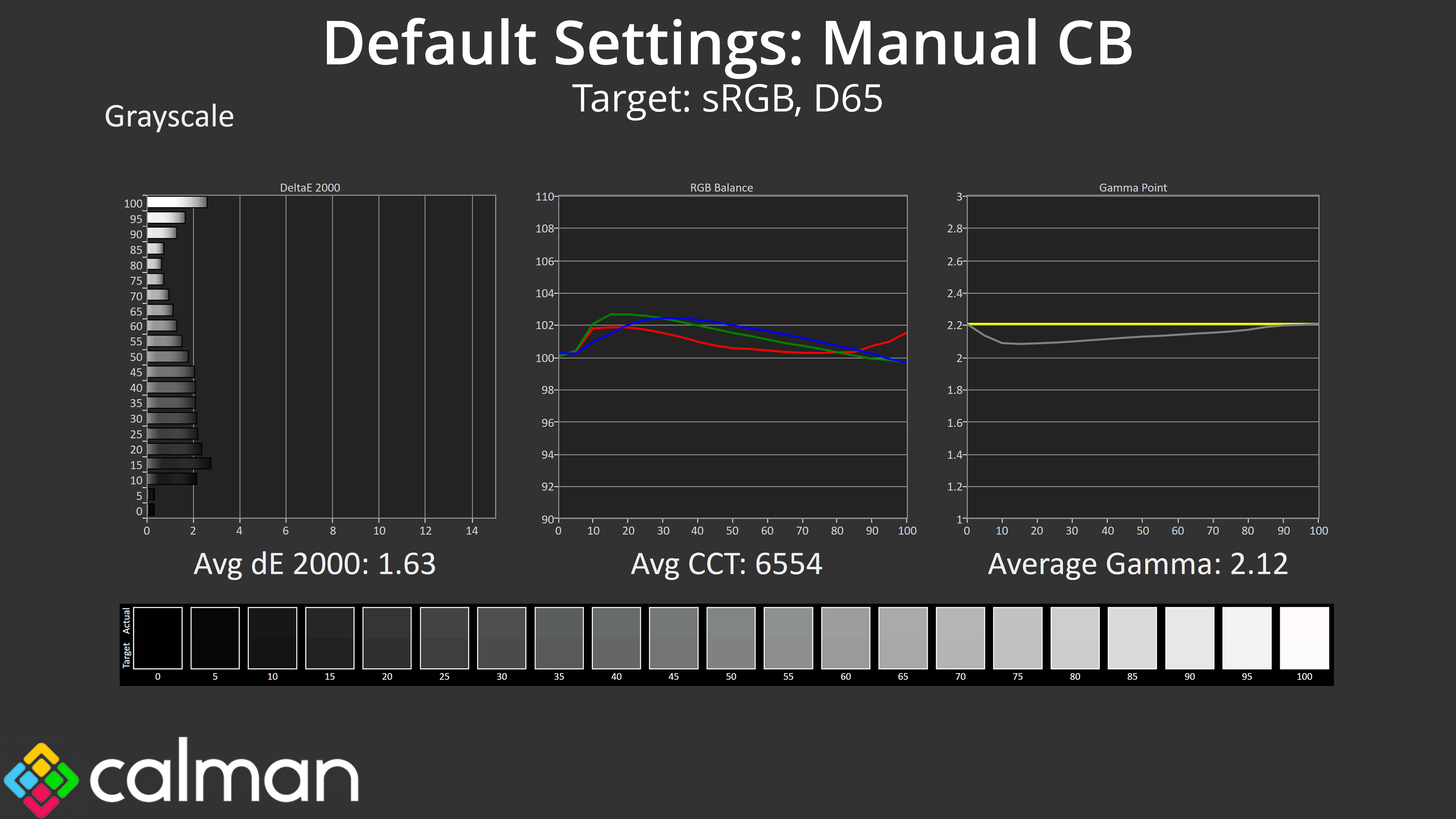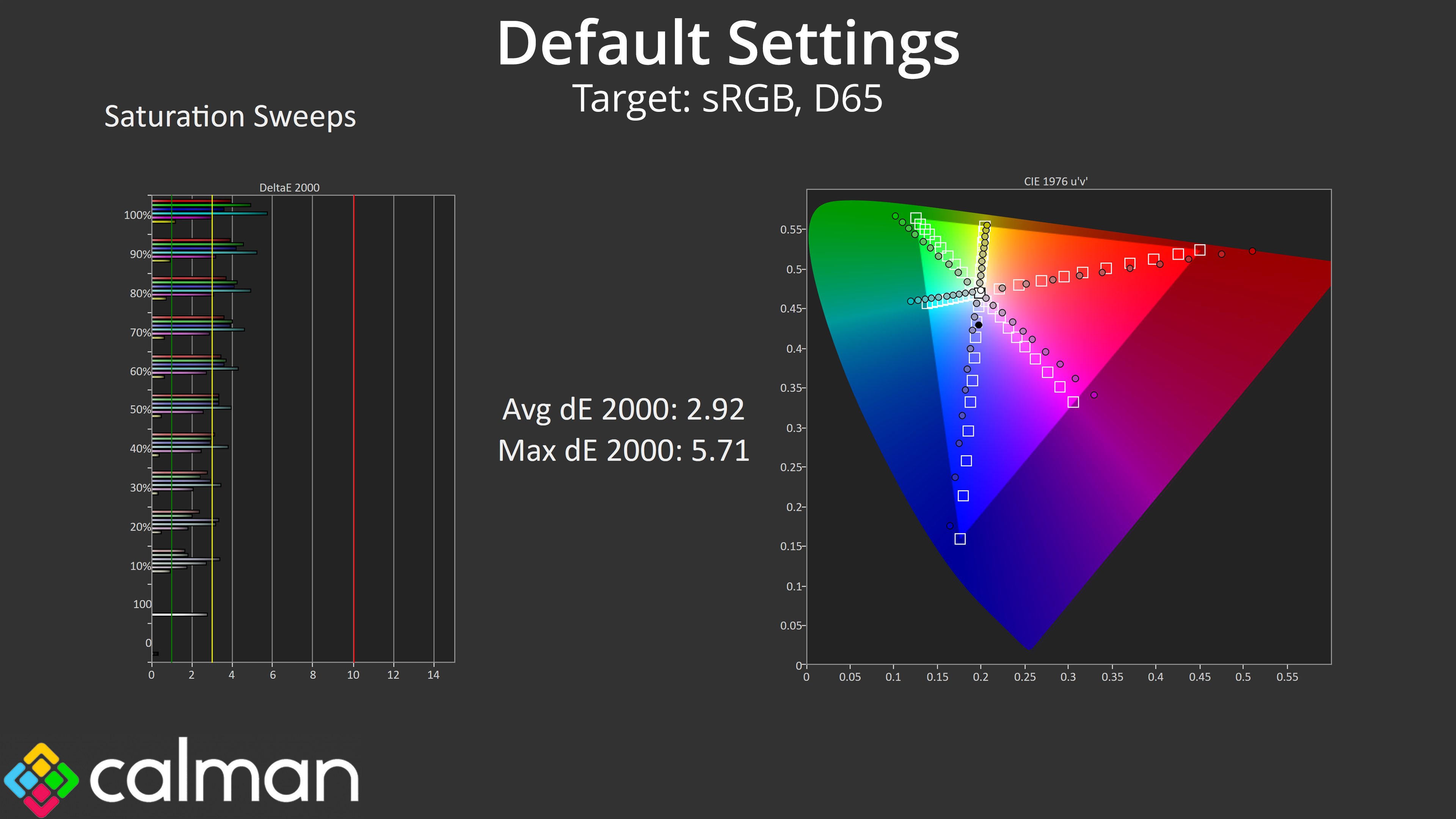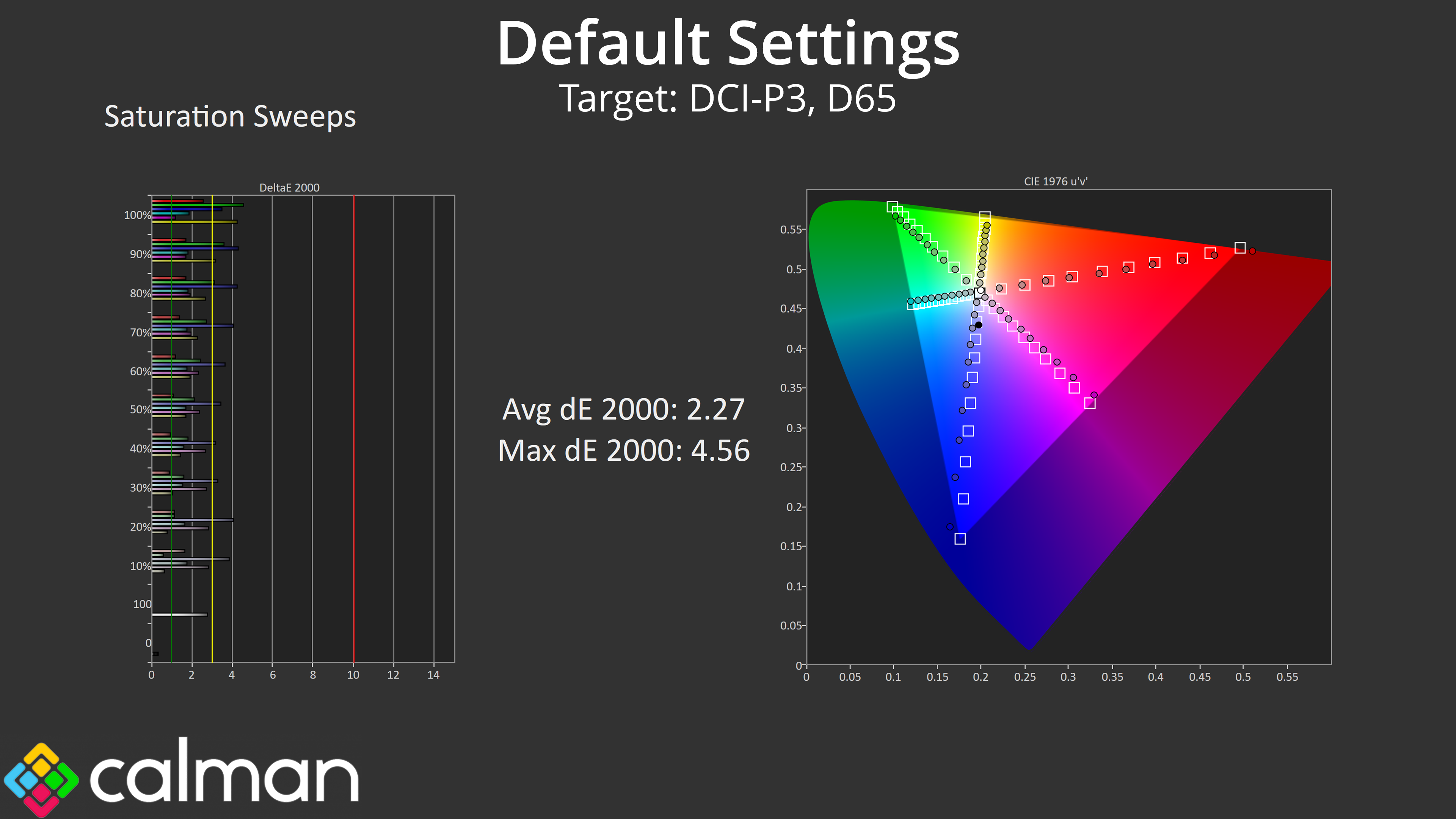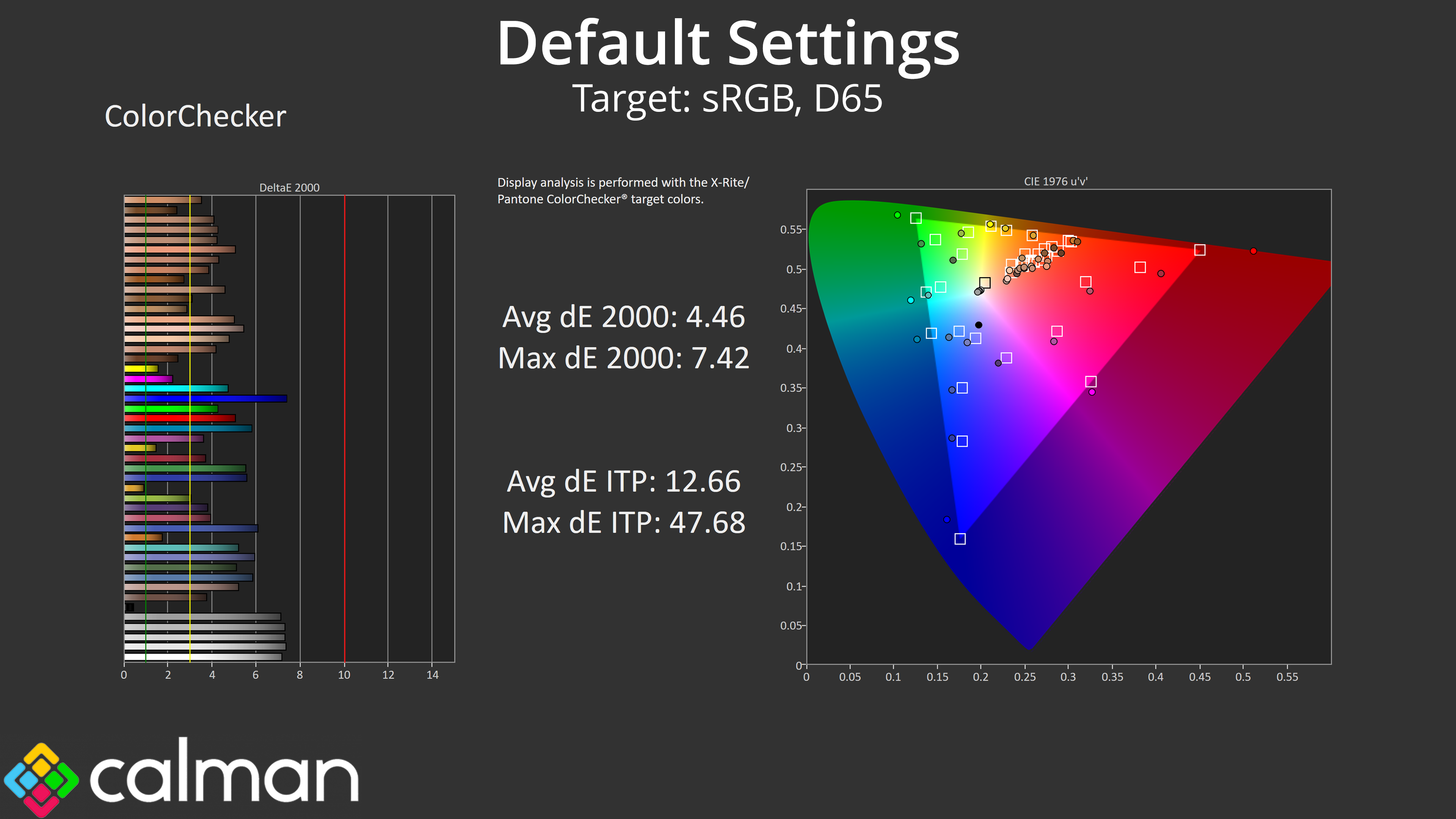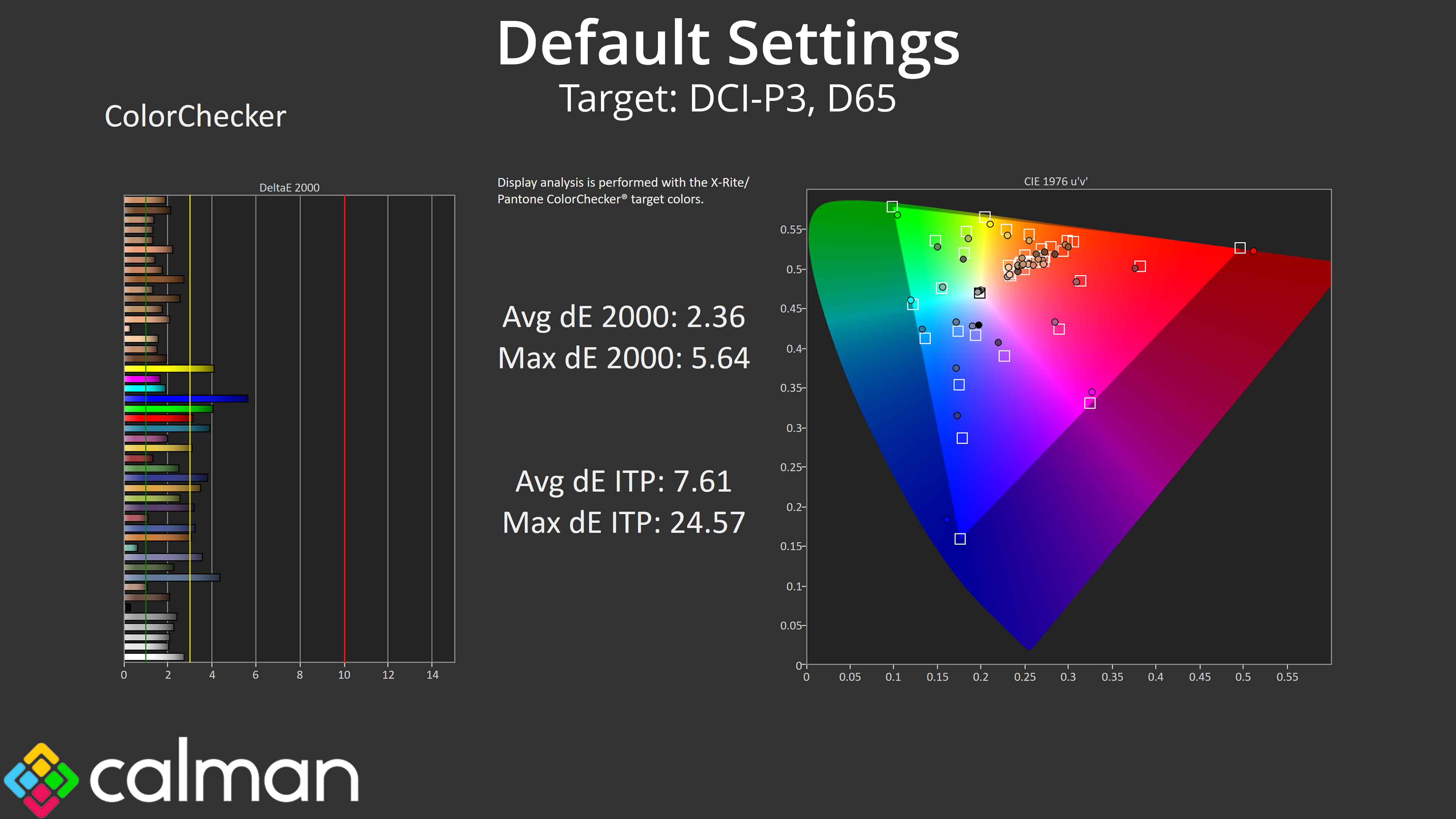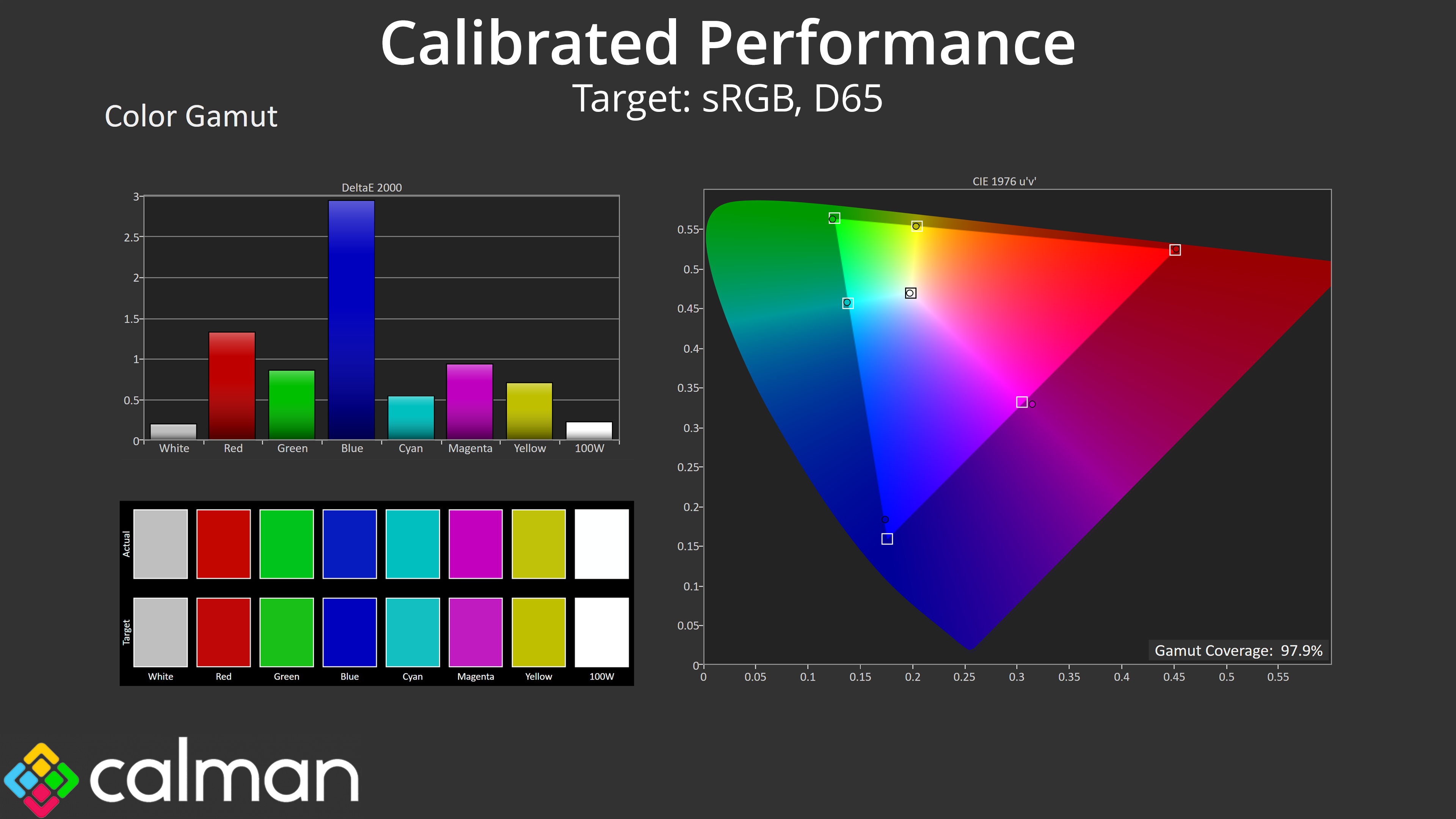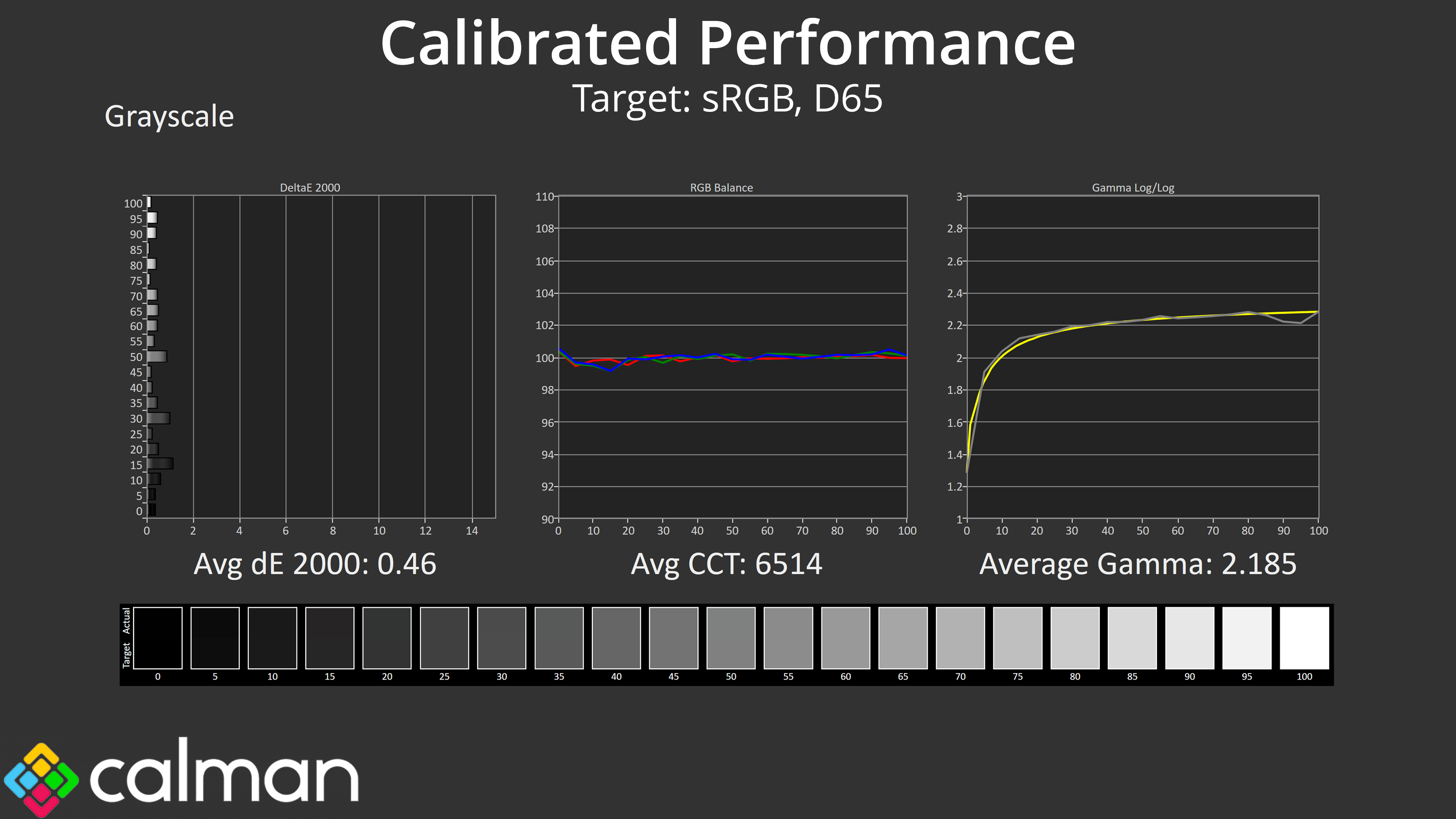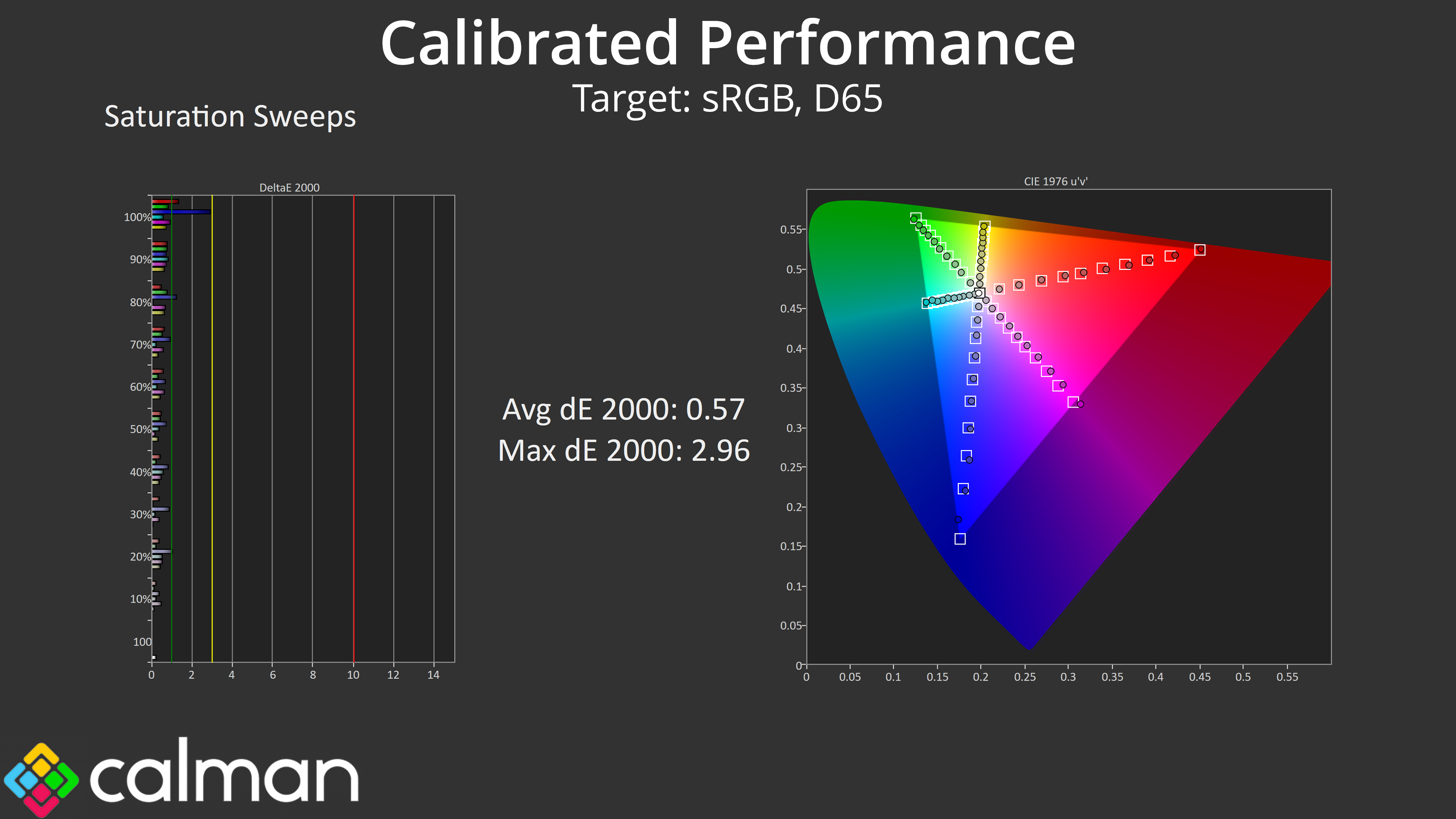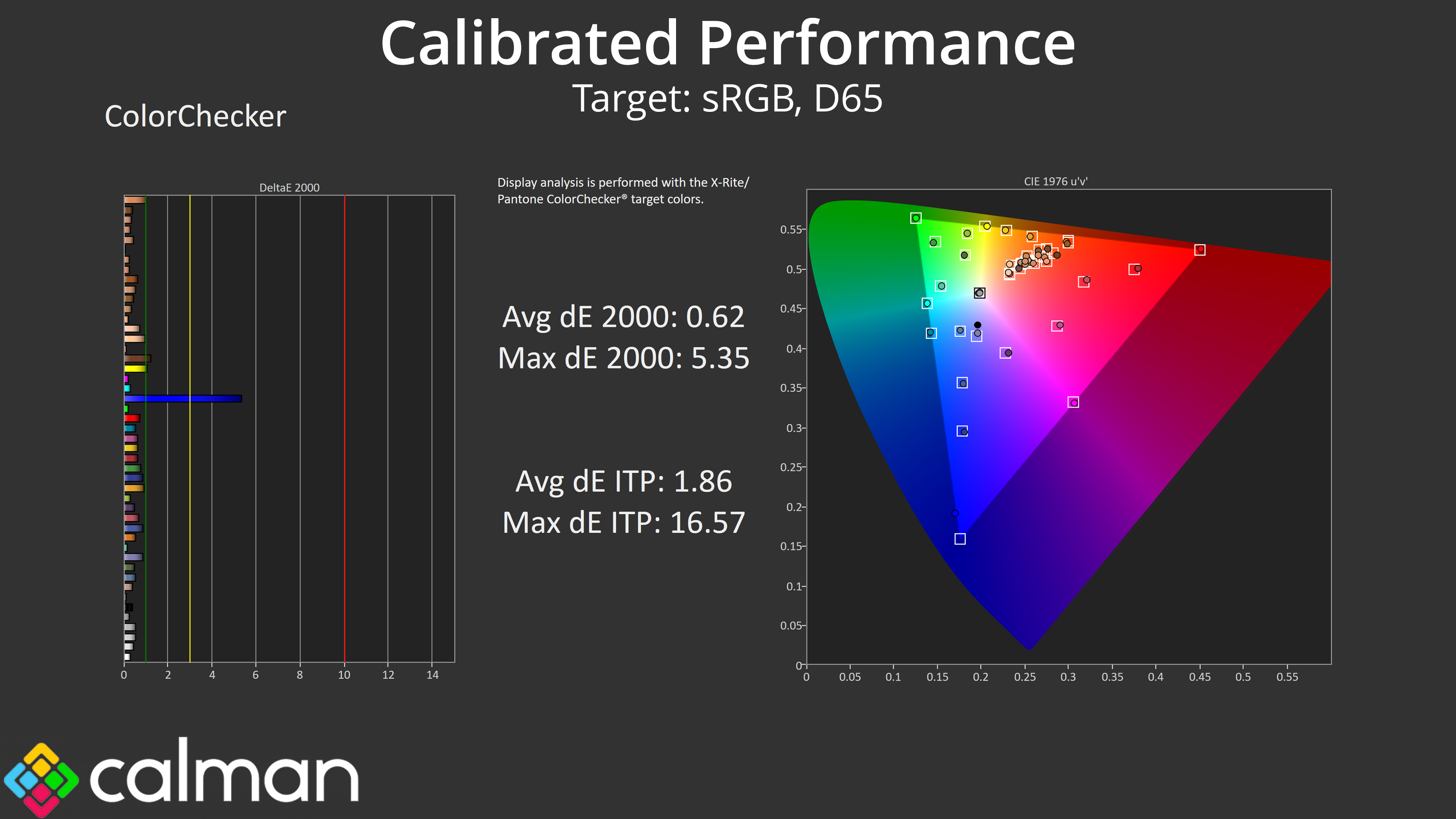Our main test involves using an X-Rite i1 Display Pro Plus colorimeter and utilising Portrait Display's Calman Ultimate software. The device sits on top of the screen while the software generates colour tones and patterns, which it compares against predetermined values to work out how accurate the screen is.
The results show:
- A monitor’s maximum brightness in candelas or cd/m2 at various levels set in the OSD.
- A monitor’s contrast ratio at various brightness levels in the OSD.
- Gamut coverage, primarily focusing on sRGB and DCI-P3 colour spaces.
- Greyscale accuracy, measured across 20 shades, with an average colour balance reported.
- The exact gamma levels, with a comparison against preset settings in the OSD.
- The colour accuracy, expressed as a Delta E ratio, with a result under 3 being fine for normal use, and under 2 being great for colour-accurate design work.
We first run these tests with the display in its out-of-the-box state, with all settings on default. If there is an sRGB emulation option or other useful mode then we may test that too. We then calibrate the screen using the Calman Ultimate software and run the tests again.
You can read more about our test methodology HERE.
Default settings
Brightness and Contrast (Full Screen)
| OSD Brightness | White Luminance (cd/m2) | Black Luminance (cd/m2) | Contrast Ratio |
| 0% | 68.7 | 0.023 | 2950:1 |
| 25% | 169.4 | 0.057 | 2981:1 |
| 50% | 265.5 | 0.089 | 2988:1 |
| 75% | 419.7 | 0.141 | 2982:1 |
| 100% | 565.5 | 0.19 | 2982:1 |
| Adv. Contrast | 126.8 | 0.041 | 3102:1 |
Starting testing with brightness and contrast, the GCB3486WQSCP gets very bright indeed, peaking at almost 570 nits – well over iiyama's claimed 500 nit figure. The minimum brightness of 69 nits isn't super-low, but it's passable. However, contrast does fall short of iiyama's claims, given we saw more like 2980:1, instead of the stated 4000:1 ratio.
I did try the advanced contrast option in the OSD, which improves things slightly, to around 3101:1, but it also caps brightness at under 130 nits, so probably isn't worth using.
Gamut (CIE 1976)
| Colour space | Coverage (%) |
| sRGB | 98.3 |
| DCI-P3 | 93.4 |
| Adobe RGB | 92.7 |
| Rec.2020 | 70.5 |
Moving on, we can see iiyama is using a wide-gamut panel, generally exceeding the sRGB space and offering 93.4% coverage for DCI-P3, alongside 92.7% reporting for Adobe RGB, and then 70.5% coverage for Rec.2020. Not bad at all considering the price.
Greyscale
Default greyscale is also generally well configured from the factory. The average colour balance of 6435K is very good, though the green channel is just a little stronger than the rest, but we're talking very small margins here. Gamma is also a touch low in the darker shades, but picks up towards the end of the curve.
Just to see if we could improve things, I set a manual colour balance in the OSD, leaving the Red channel at 50 but knocking both Green and Blue down to 49. This is admittedly a minor change, but it did help make the colour balance that bit more accurate, improving the greyscale average dE 2000 to just 1.63.
Saturation
Meanwhile, our saturation sweeps a typical of a wide-gamut monitor, given we see a fair amount of oversaturation relative to sRGB, though things do improve when we compare against the DCI-P3 space.
Colour Accuracy
The same also goes for colour accuracy. Against the sRGB space, the high levels of oversaturation means overall accuracy is poor, averaging a dE 2000 of 4.46. Comparing against DCI-P3 though, this improves to 2.36.
Calibrated Results
Unfortunately, iiyama has not included an sRGB mode in the OSD, so we can't clamp the gamut to reduce oversaturation. Instead, to get the most accurate results we'd have to manually calibrate the screen, and in fairness to iiyama, the results are very good indeed, with colour accuracy improving hugely – the only slight aberration being the 100% blue channel which isn't quite covered by the screen's native gamut. However, I do think an sRGB should be included as standard in this day and age, so hopefully iiyama can take that on board for the next revision.
 KitGuru KitGuru.net – Tech News | Hardware News | Hardware Reviews | IOS | Mobile | Gaming | Graphics Cards
KitGuru KitGuru.net – Tech News | Hardware News | Hardware Reviews | IOS | Mobile | Gaming | Graphics Cards


